Fitness Trackers and Carrot-and-Stick Motivation
This is not an ad.
It is, however, a shameless account of my fixation on the Jawbone UP24 fitness app. I'll admit, I love data, especially highly specific digital data. Admittedly, some of my organizational tendencies are old-school. Every day, I make a note card filled with every single thing I'll do in the next twenty-four hours, including "drink 3/4 gallon of water" and "exercise." I'm not sure why I like the note cards in spite of my plethora of technology--all of which is capable of organizing and replicating my to-do lists. I think maybe I fetishize the documentation of it. I really like running a nice line through each of my tasks. The actual exercise from the list, though, I need to be as techy as possible. I want records of my heart rate, my sleep cycles, my weight training routines. And I want them to be pretty.
So a little over a year ago, while recovering from spinal surgery, I bought an UP24. For anyone who isn't familiar with fitness wearables, I give you the UP:
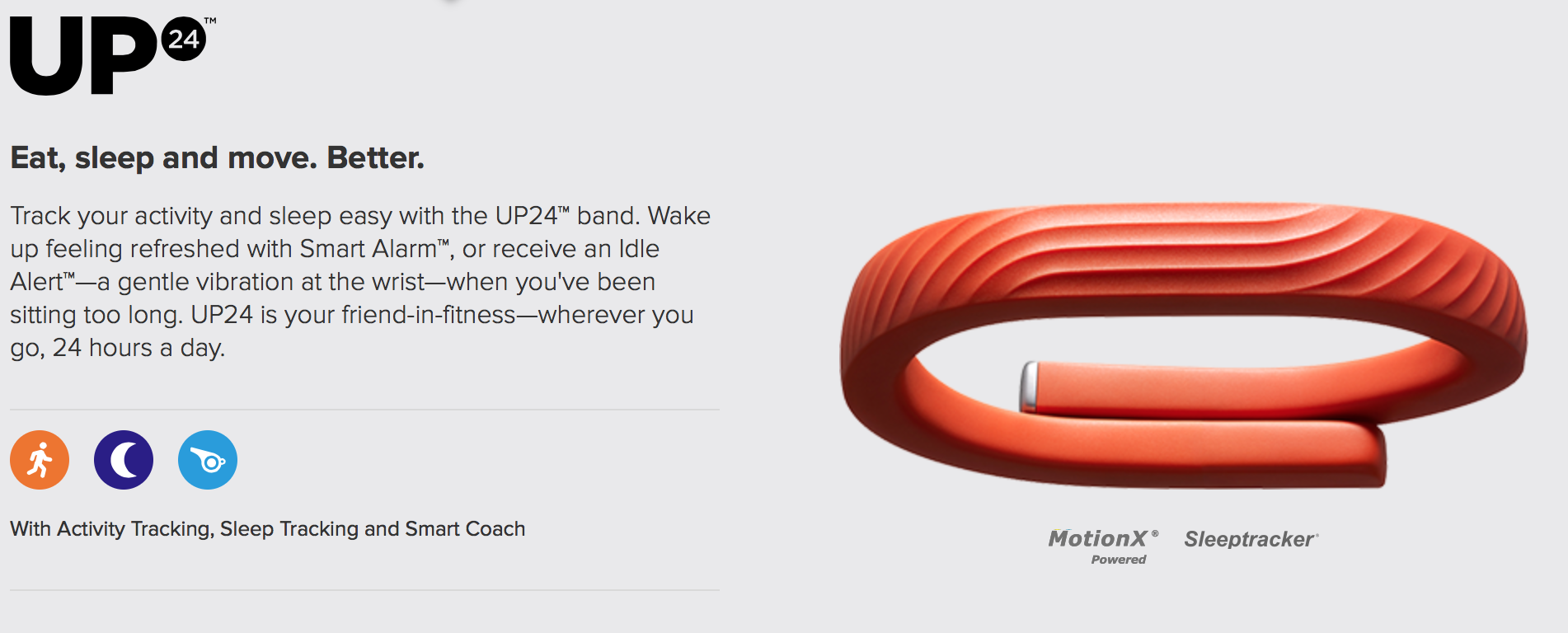
Image Credit: Jawbone
Here's how it works: you wear this little band, which looks a little like a medical bracelet or a runner's ID band. It sort of marks you out as a fitness enthusiast, but only for people who recognize it. It can lead to little small-talks of solidarity. I wear one too! and whatnot. The band then connects to a smartphone app, like so:
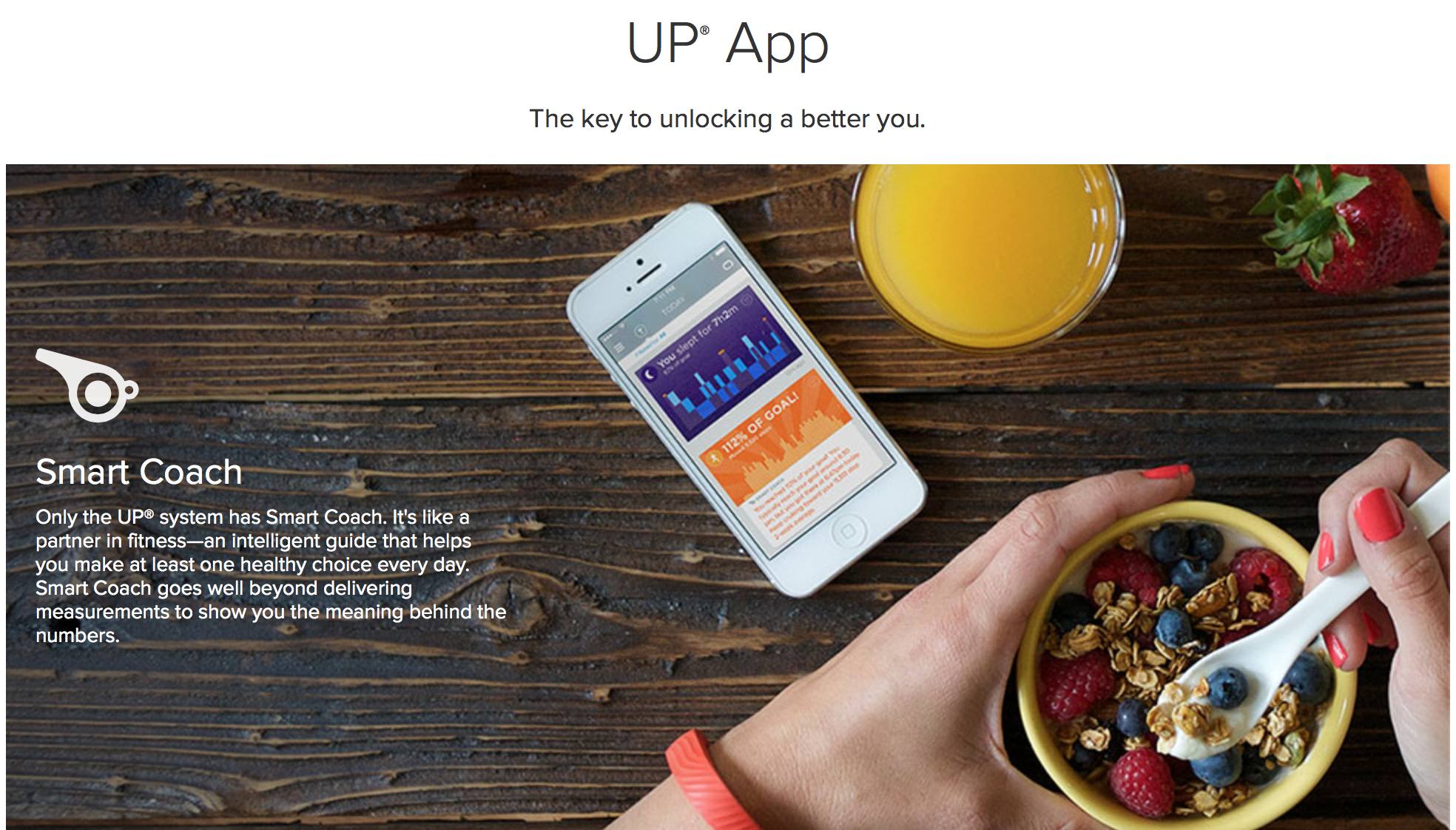
Image Credit: Jawbone
Meant to visually display motivation--both carrot and stick--for the user, the app uses smiley faces, color schemes, and more graphs than one could possibly need to display the fitness data. When you succeed, you get nice congratulations, with little two-toned spinning wheels:
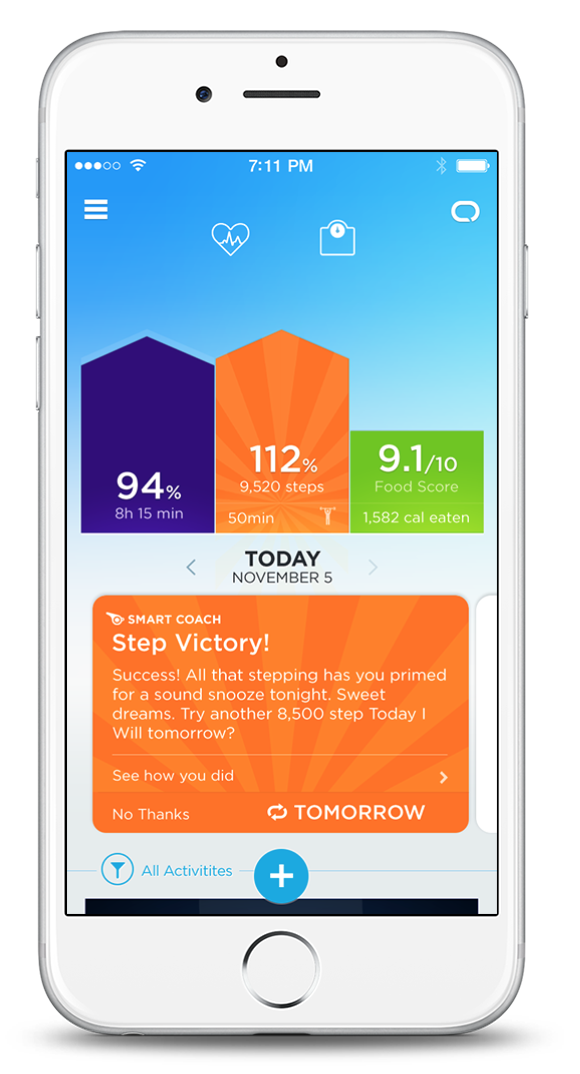
Image Credit: Jawbone
Failure, though, is also dramatized. Having missed my sleep goal for a few days, I get this little chastisement:
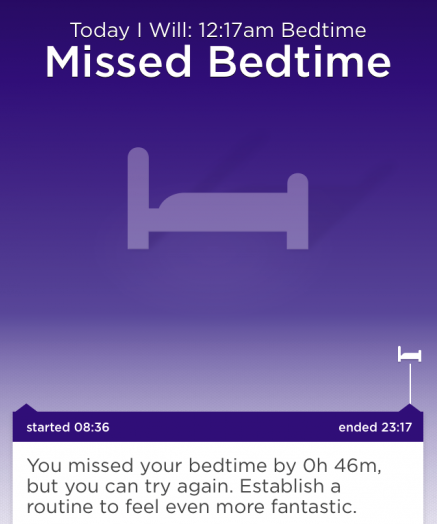
Image Credit: Jawbone
"Even more fantastic." Hmmph. The food tracking feature, too, gets a little heavy-handed with the dour motivation. It separates food into three categories, according to how healthy each food is. The categories, though, get a little extreme. For example, a hard-boiled egg, one of my current not-filling-but-portable snacks, gets a "yellow" food rating (not so good), because of the cholesterol in the egg. It also drives up my cholesterol percentage on the review page:
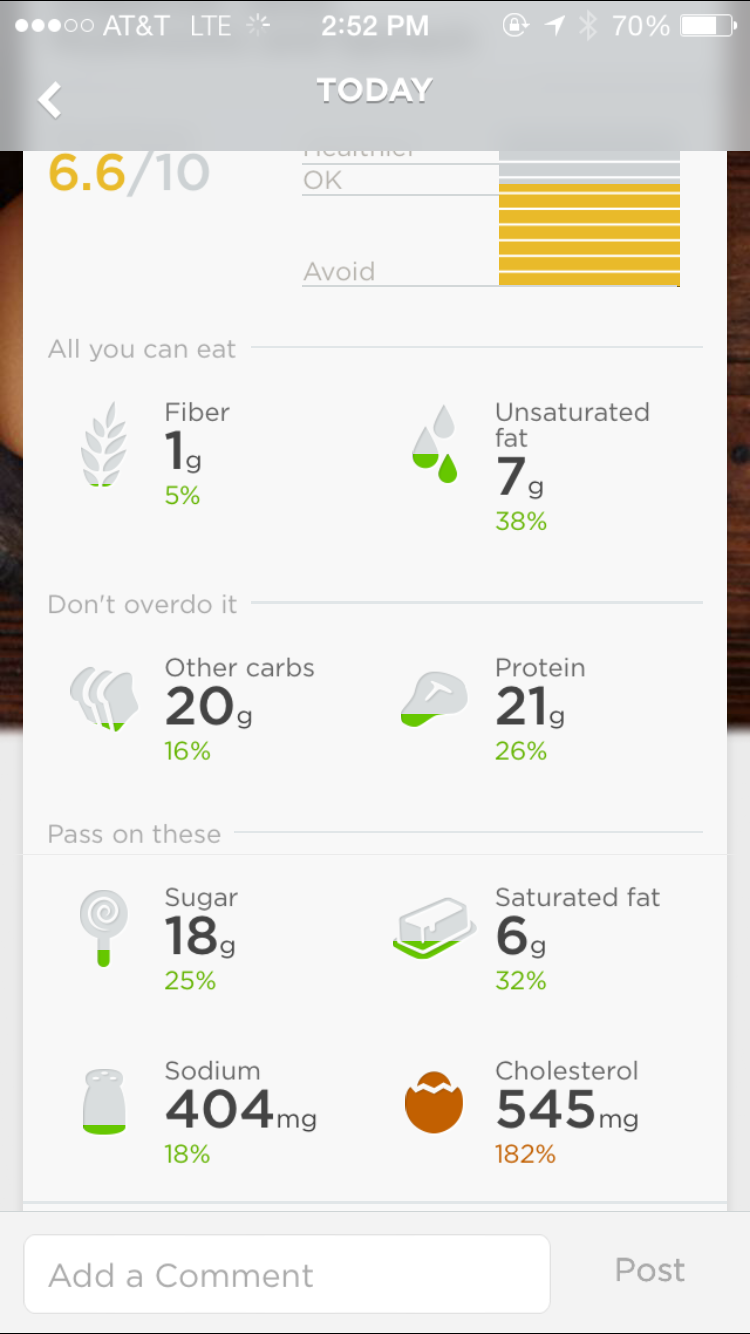
Image Credit: Jawbone App
This strikes me as a little extreme. On one hand, the fact that the app encourages me to continue stepping, incorporating different kinds of workouts, and pay attention to my nutrition makes me focus on health more than body image. Each of the visual features is meant to focus on maintaining a healthy lifestyle--no fitness models, action shots, or oiled-up six-packs in sight. So we're getting visual fitness motivation without the advertisement-laden, Victoria's Secret-inspired "fitsperation" like we might find on Pinterest:

Image Credit: Pinterest
On the other hand, though, I've noticed that the visual organization of my shortcomings, like this comparison between my calories burned and calories eaten, tends to exacerbate my unhealthy perfectionism. Instead of drilling unhealthy bikini shots into my head, then, I'm sometimes guilty of turning my fitness into a stringent obligation, where the pretty colors and frankly gorgeous design lay out just how lazy I've been on those at-home "working on my prospectus" days. This is the purpose of the app, of course, but I'm wondering if the visual coding of guilt is all that much better than ads like this one:
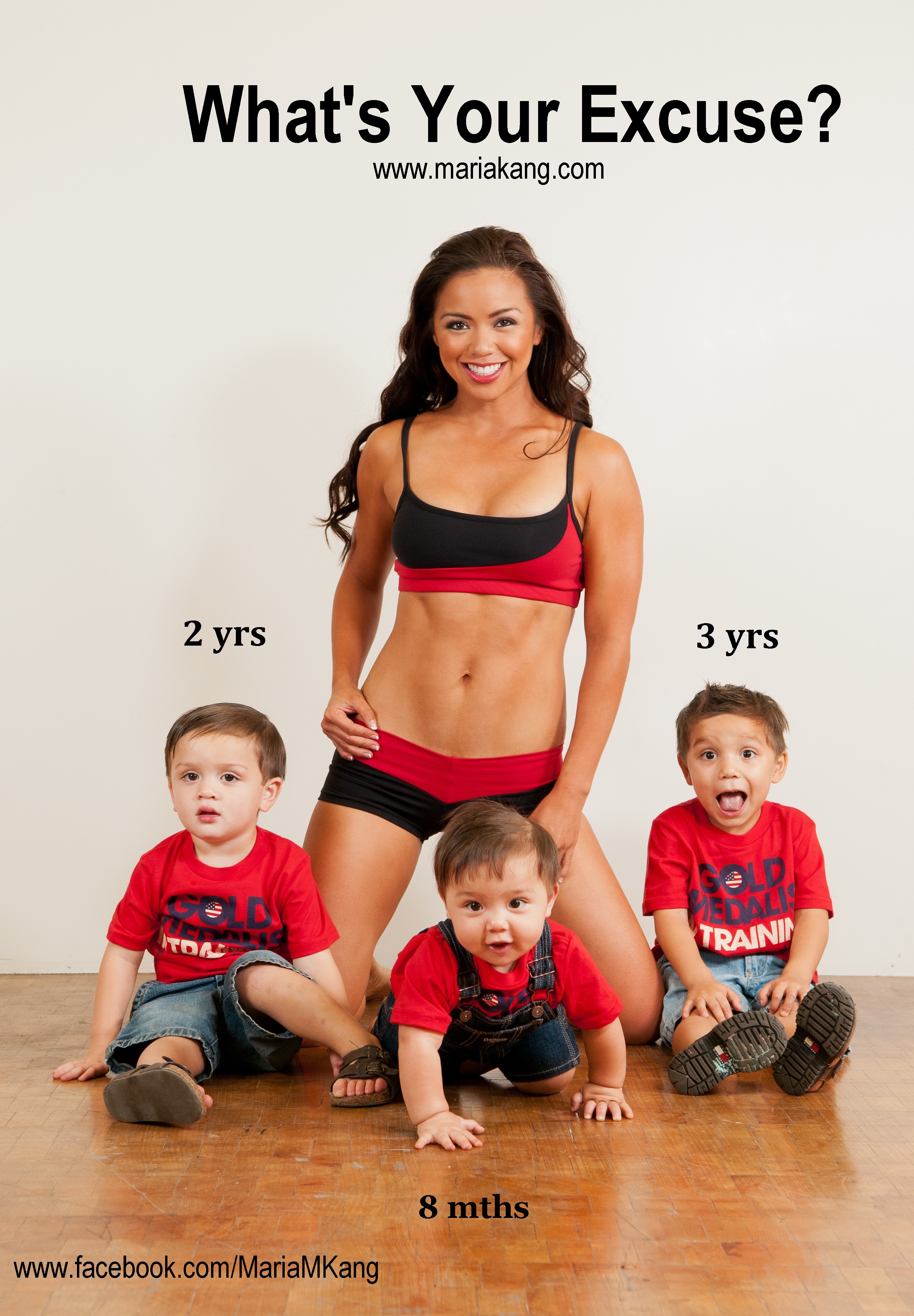
Image Credit: Maria Kang
Okay, so I don't really think any fitness app is anywhere near as horrendous as this "you can have it all" bit of fat-shaming. In fact, I also suspect that my investment in the negative feedback has way more to do with disliking unmet goals than with the way Jawbone has designed the app. The way that mundane failures like racking up 8,000 steps instead of 10,000 is worse, though, because the app also allows you to add "teammates" for encouragement. The Teammates feature attempts to bring the very private system of graphs and numbers into a limited public forum. Teammates can (with permission), view each other's food intake, steps, exercise goals, even sleep cycles. This has led to my share of good-natured leers (Can they see you have sex?) as well as some actual motivation. My mother and I comment on each other's meals, tease each other about lapsing into our favorite workouts rather than switching it up, and generally feed each other bits of affirmation. None of my teammates (because I'm not teammates with assholes) ever comment on my lack of stepping or my consumption of gin and ice cream (which no amount of red percentage signs will make me give up). But, yes, because I know my stats will show up on their apps in a news-feed-like interface, I do feel a stronger sense of obligation to meet my goals.
Still, I guess that's what I signed up for. Healthy peer pressure, mobilized my aesthetically-pleasing charts and pictures of the quinoa I can never actually cook correctly.
Footnote: No, they can't actually see you have sex. I'm told.



Add new comment